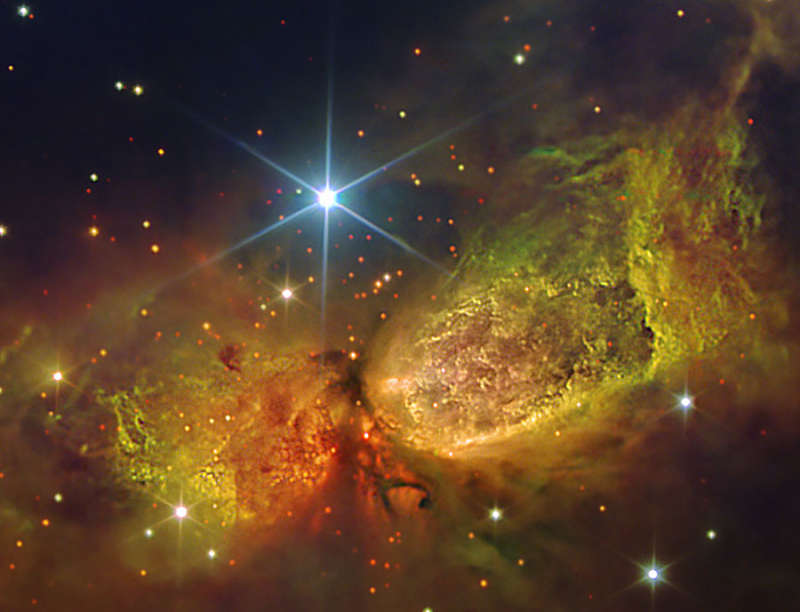Star Forming Region S106

Explanation:
Massive star IRS 4 is beginning to spread its wings.
Born only about 100,000 years ago,
material streaming out from this newborn star
has formed the nebula dubbed Sharpless 2-106 Nebula (S106),
pictured above.
A large disk of
dust and gas orbiting
Infrared Source 4 (IRS 4), visible in dark red near the image center,
gives the nebula an
hourglass or
butterfly shape.
S106 gas near IRS 4 acts as an
emission nebula
as it emits light after being
ionized, while
dust
far from
IRS 4 reflects light
from the central star and so acts as a
reflection nebula.
Detailed inspection of
images like the above image has
revealed hundreds of low-mass
brown dwarf stars lurking in
the
nebula's gas.
S106 spans about 2
light-years and lies about 2000 light-years away toward the
constellation of
the Swan (
Cygnus).
Authors & editors:
Robert Nemiroff
(MTU) &
Jerry Bonnell
(USRA)
NASA Web Site Statements, Warnings,
and Disclaimers
NASA Official: Jay Norris.
Specific
rights apply.
A service of:
LHEA at
NASA /
GSFC
& Michigan Tech. U.

